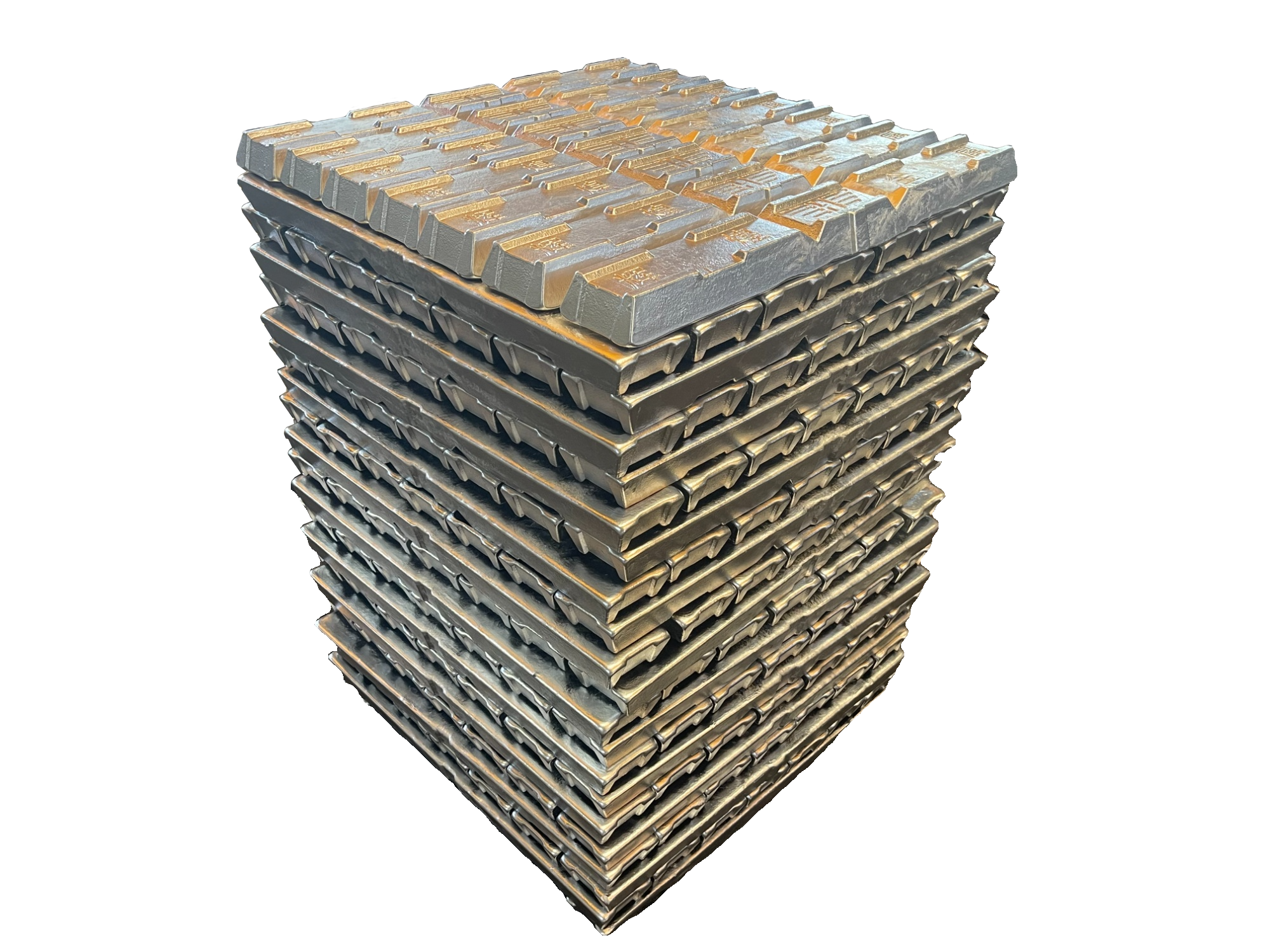
Recycled Aluminum Ingots: A Shining Pearl on the Low-Carbon Road
Carbon Footprint of Recycled Aluminum Ingots: Challenges and Opportunities
I. Overview of the Carbon Footprint of Recycled Aluminum Ingots
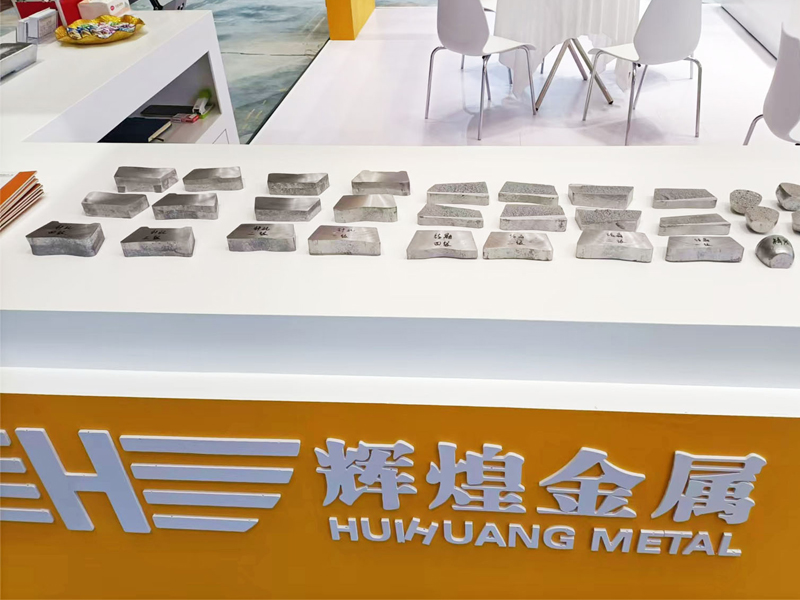
The carbon footprint of recycled aluminum ingots refers to the total amount of direct and indirect greenhouse gas emissions released throughout their entire life cycle. This concept covers all aspects, including the recycling of raw materials, production, transportation, and sales.
According to relevant data, Judong Co., Ltd. has obtained the "Carbon Footprint Certificate for Recycled Aluminum Alloy Ingots". Its carbon footprint data shows that the carbon emission quantity of "recycled aluminum alloy ingots" is 15 times lower than that of "primary aluminum alloy ingots", which fully demonstrates the significant advantage of recycled aluminum ingots in reducing carbon emissions.
The calculation of the product carbon footprint is crucial for the recycled aluminum ingot industry. It not only helps to improve consumers' awareness of the environmental friendliness of products but also enhances the market competitiveness of enterprises. For example, obtaining a carbon footprint certificate means that the product has achieved low carbon emissions in all aspects.
In the raw material recycling process, recycled aluminum ingots mainly utilize waste aluminum, waste aluminum alloy materials, or aluminum-containing scraps. Aluminum alloys or aluminum metals are obtained through remelting and refining. Compared with primary aluminum ingots, recycled aluminum ingots reduce multiple high-carbon emission processes, such as bauxite mining, alumina smelting, and electrolytic aluminum production.
In the production process, enterprises continuously optimize production processes and adopt advanced recycling technologies to recycle waste aluminum alloys, realize the recycling of resources, and thus reduce carbon emissions. Meanwhile, they actively participate in the development of green energy. For example, Judong Co., Ltd. adheres to the concept of "one increase and two decreases" to reduce carbon emissions in the production process.
The transportation process is also an important part of the carbon footprint. By optimizing transportation routes and improving transportation efficiency, energy consumption and greenhouse gas emissions can be reduced.
In general, the concept of the carbon footprint of recycled aluminum ingots provides an important measurement standard and development direction for the sustainable development of the industry.
II. Accounting Methods for the Carbon Footprint of Recycled Aluminum Ingots
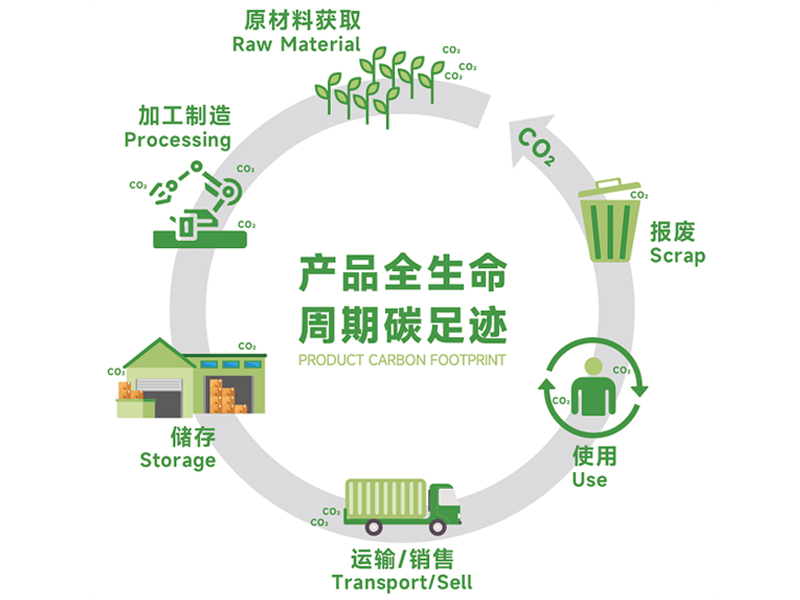
(1) International Practice Methods
Institutions such as the International Aluminium Institute (IAI) and the Aluminium Stewardship Initiative (ASI) have relatively mature methods for accounting for the carbon footprint of recycled aluminum ingots. In terms of fixed accounting boundaries, they cover the emission-intensive key processes of the entire supply chain from the acquisition of aluminum raw materials to the production of final products, ensuring that the product carbon footprints of aluminum enterprises with different business scopes and product structures are comparable and covering most of the emissions in the carbon footprint of aluminum products. In terms of the principle of waste aluminum information disclosure, they unify the definition of waste materials, clarify the calculation method of waste material content, and improve the transparency of information related to waste materials and recycled aluminum. For example, waste aluminum is divided into internal waste, pre-consumer waste, and post-consumer waste. Through clear calculation methods, the production efficiency and the recycling utilization rate of post-consumer waste are promoted. This not only helps downstream purchasers to more accurately evaluate the carbon emission levels of aluminum products but also stimulates the emission reduction actions of electrolytic aluminum and encourages the recycling of post-consumer waste.
(2) Domestic Accounting Methods
The domestic "Methodology for Accounting and Reporting of the Carbon Footprint of Aluminum Products" provides detailed guidance for accounting for the carbon footprint of recycled aluminum ingots. In terms of accounting steps, according to the carbon accounting-related documents issued by the International Aluminium Institute, the carbon emission intensity of a product is calculated by dividing the total carbon emissions by the total production volume. The total carbon emissions include direct emissions, indirect emissions, and offset emissions. For the reporting of the content of waste aluminum components, the definition of waste aluminum is clarified, including internal waste, pre-consumer waste, and post-consumer waste. The calculation of the proportion of waste aluminum is based on products with fixed comparison boundaries, and emphasis is placed on considering improving the recycling and utilization of post-consumer waste. In the accounting and reporting of the product carbon footprint, general accounting principles are followed. Accounting and reporting are carried out according to individual production sites, including relevant greenhouse gas emissions, and reported in units of t CO₂e/t product. In addition, it is also required to report the carbon emission intensity from "mine to smelting" to improve the transparency of carbon emissions in primary aluminum production. Through these accounting methods, the domestic recycled aluminum ingot industry can calculate the product carbon footprint more scientifically and accurately, providing strong support for promoting the low-carbon transformation of the industry.
III. Current Research Status of the Carbon Footprint of Recycled Aluminum Ingots
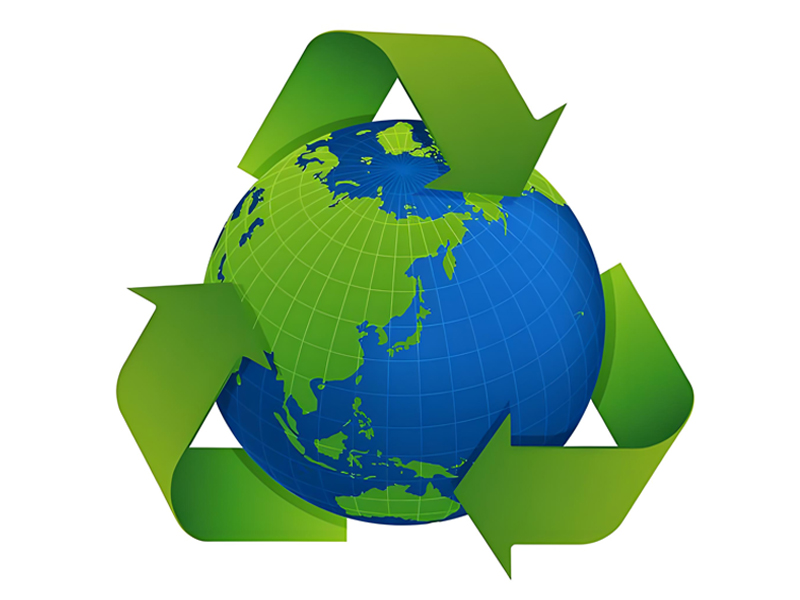
(1) Comparison between Domestic and Foreign Situations
Since 1991, the carbon footprint of aluminum production in North America has decreased by more than half. The carbon footprint of primary aluminum production has decreased by 49%, while that of recycled aluminum production has decreased by 60%. The energy required for primary aluminum production and recycled aluminum production has also decreased by 27% and 49%, respectively. Aluminum produced in North America mainly relies on renewable hydropower and is one of the cleanest aluminums in the world. Meanwhile, regional differences in primary aluminum production have led to significant differences in the environmental footprints of various aluminum products. The carbon intensity of aluminum products produced in regions that mainly rely on coal and natural gas for power generation, such as China or the Middle East, may be two to three times that of similar products produced in North America.
In China, there is still a long way to go in waste aluminum recycling. Currently, the recycling rate of beverage cans abroad is significantly higher than that in China. Among them, EU countries such as Germany have a relatively high level of recycling and utilization. In China, due to the imperfect recycling system, a scientific recycling system has not been formed, resulting in a fragmented market, unstable recycling channels, and low resource enrichment, which in turn affects the utilization of waste beverage cans. China's waste aluminum recycling not only has certain deviations in social concepts but also has problems such as low aggregation, lack of system operation, and lack of industry standards.
(2) Enterprise Cases
With the help of Zhejiang Environmental Science and Technology Co., Ltd., Judong Co., Ltd. has obtained the "Carbon Footprint Certificate for Recycled Aluminum Alloy Ingots Certified by ISO14067". The carbon emission quantity of its "recycled aluminum alloy ingots" is 15 times lower than that of "primary aluminum alloy ingots". Judong Co., Ltd. has always adhered to the concept of green and sustainable development, adopted advanced recycling technologies to recycle waste aluminum alloys, realized the recycling of resources, and reduced carbon emissions. Meanwhile, adhering to the concept of "one increase and two decreases", it actively participates in the development of green energy. By continuously improving energy efficiency levels and optimizing the industrial structure, it has achieved comprehensive and effective utilization of hazardous waste of recycled aluminum, promoted the recycling of recycled aluminum, and set an example for the industry.
Yinbang Co., Ltd. actively responds to the national green circular economy policy, reduces energy consumption, improves the working efficiency of equipment, and reduces carbon emissions by purchasing recycled aluminum ingots to supplement raw materials in production.
The practices of these enterprises show that domestic enterprises are making active efforts to reduce the carbon footprint. By adopting advanced technologies, optimizing production processes, and improving resource utilization rates, they are contributing to promoting the sustainable development of the recycled aluminum ingot industry.
IV. Methods for Reducing the Carbon Footprint of Recycled Aluminum Ingots
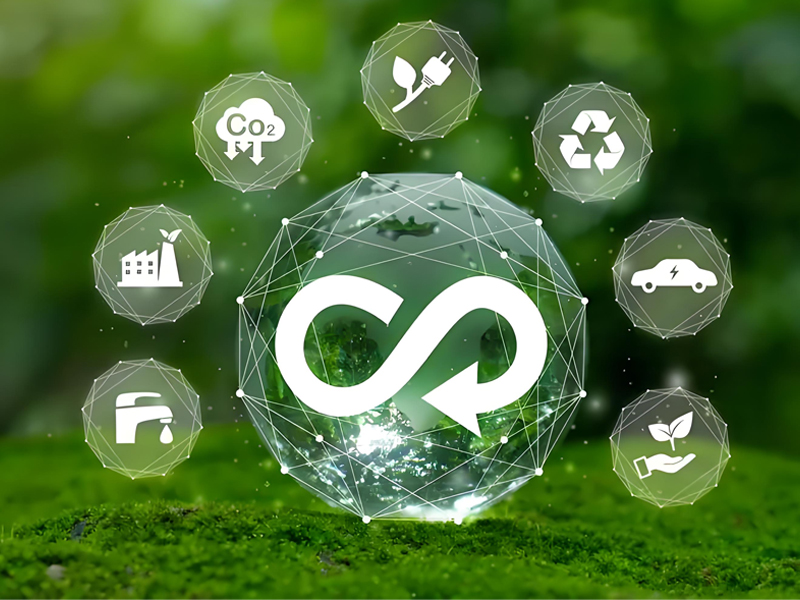
(1) Increasing the Recycling Proportion
Increasing the recycling proportion is one of the important ways to reduce the carbon footprint of recycled aluminum ingots. With the gradual replacement of primary aluminum by recycled aluminum, it can effectively promote the peak of carbon emissions. Relevant data show that in China, only about 20% of recycled aluminum can be used to produce corresponding grades of wrought aluminum alloys every year to achieve grade-preserving recycling and utilization and maintain the value of waste aluminum. In the product structure of recycled aluminum in developed countries, the proportion of wrought aluminum alloys exceeds half. Currently, the most valuable grade-preserving recycling abroad is waste aluminum alloy beverage cans, which has formed an optimal industrial cycle chain of "recycling - processing - can making - can filling - consumption" that never disappears. China should actively learn from advanced foreign experience, increase the recycling proportion, and improve the quality and grade of recycled aluminum. For example, enterprises can strengthen cooperation with enterprises engaged in the dismantling and treatment of waste electrical and electronic products and end-of-life vehicles, deeply explore the collaborative treatment process technologies for different aluminum-containing waste materials, improve the resource recovery rate and comprehensive utilization rate, reduce energy consumption levels and production costs, and increase the profit margin of enterprises. Meanwhile, it is encouraged to promote the establishment of a public refined recycling management system in the whole society to avoid the phenomenon of "mixed recycling" of waste aluminum and better cherish resources and energy.
(2) Utilizing Renewable Energy
Establishing aluminum refineries and smelters in regions rich in wind and solar resources and making full use of renewable energy, such as solar energy and wind energy, can effectively reduce the carbon footprint of recycled aluminum ingots. For example, solutions such as "photovoltaic + energy storage" can be adopted to provide clean electricity for the aluminum production process. According to statistics, in 2020, the electrolytic aluminum industry in China consumed about 485.1 billion kilowatt-hours of electricity throughout the year, accounting for about 6.46% of the total electricity consumption in the country. With such a large proportion of electricity consumption, if renewable energy can be used for power supply, carbon emissions will be greatly reduced. In addition, cooperation with regions rich in hydropower can also be considered to use hydropower for aluminum production. For example, the Rusal Krasnoyarsk Aluminum Plant of United Company Rusal uses clean green hydropower as the energy for all aluminum production processes, making the carbon footprint of primary aluminum produced by 140kA inert electrolytic cells as low as 0.01 CO₂eq t/t Al, which is only about 1/1000 of the emissions of primary aluminum produced by traditional processes (12t/t Al).
(3) Improving Production Processes
Improving production processes is a key measure to reduce the carbon footprint of recycled aluminum ingots. New environmentally friendly electrolytic aluminum processes can be adopted, such as the zero-carbon emission technology for aluminum electrolysis. In 2019, Elysis, a joint venture established by Alcoa and Rio Tinto, produced the world's first batch of primary aluminum with zero carbon emissions. Up to now, the world aluminum industry has successfully developed three inert anode aluminum electrolysis technologies with zero carbon emissions: the ElysisTM technology of Elysis Company, the inert anode process of United Company Rusal, and the Halzero process of Hydro Aluminium with near-zero aluminum emissions. China also attaches great importance to the research and development of inert anode aluminum electrolysis technologies. For example, since 2008, units such as Northeastern University and Central South University have conducted research and development on inert anode materials and their characteristics for more than 10 years.
In addition, furnaces can be modified to enhance flexibility. For example, some enterprises use induction furnaces, side-well furnaces, double-chamber furnaces (multi-chamber furnaces), etc. to process scrap materials to reduce losses. For recycled aluminum raw materials with coatings on the surface, generally, paint removal kilns, double-chamber furnaces, or a combination of the two are used for treatment. Some manufacturers also use multi-chamber furnaces for paint removal and smelting. Meanwhile, continue to research high-efficiency, energy-saving, and fast melting furnaces suitable for processing aluminum alloy waste materials to further save energy and reduce consumption, improve the thermal efficiency of melting furnaces, extend the service life of furnaces, reduce metal burning losses, and improve the metal recovery rate. Research on aluminum melt refining and filtering technologies related to recycled aluminum to improve the quality of recycled aluminum. Research and develop treatment processes for low-grade and composite aluminum alloy waste materials and improve the pretreatment process. Research the best pretreatment systems for different recycled aluminum raw materials, do a good job in sorting and treatment, and control the quality from the source. Research the harmless treatment and application of secondary aluminum ash.
V. Future Prospects of the Carbon Footprint of Recycled Aluminum Ingots
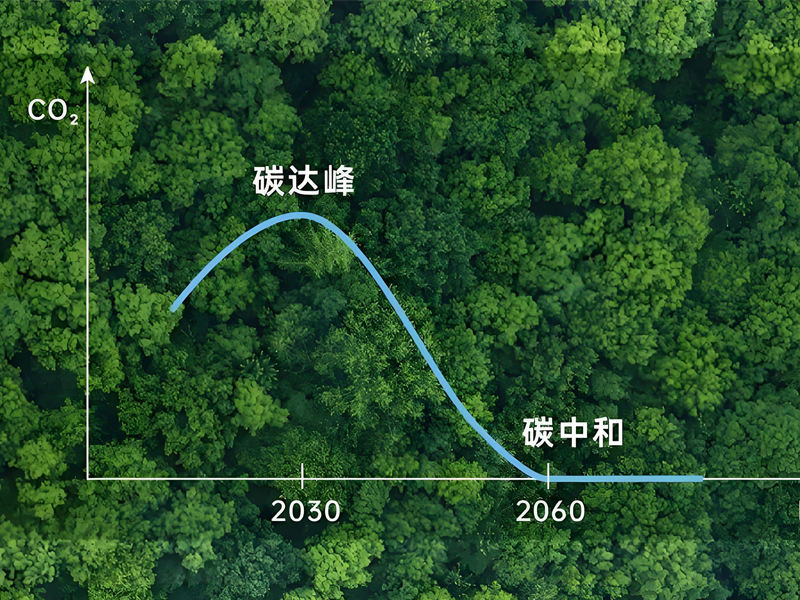
The recycled aluminum ingots indeed face some challenges in terms of the carbon footprint. On the one hand, the insufficient supply stability of waste aluminum raw materials may affect the production scale of recycled aluminum ingots and the effect of reducing the carbon footprint. Since the recycling of waste aluminum is affected by multiple factors, such as consumers' recycling awareness and the smoothness of recycling channels, there is a certain degree of uncertainty in the supply of waste aluminum. On the other hand, international trade disputes and changes in import and export policies may also have an impact on the recycled aluminum ingot industry. For example, some countries may introduce policies to restrict the import of waste aluminum, which will reduce the raw material sources of domestic recycled aluminum ingot enterprises and thus affect the development of the industry.
However, with technological progress and policy promotion, the future potential of recycled aluminum ingots is huge and worthy of expectation. In terms of technology, with the improvement of environmental requirements and the continuous progress of science and technology, recycled aluminum enterprises will continue to carry out technological innovation, improve product quality, and reduce the carbon footprint. For example, some enterprises are researching and developing more efficient recycling technologies that can improve the recovery rate and utilization rate of waste aluminum and reduce resource waste. Meanwhile, new production processes and equipment will continue to emerge, such as more energy-efficient furnaces and more advanced refining and filtering technologies, all of which will help to reduce the carbon footprint of recycled aluminum ingots.
In terms of policy, the support for the recycled aluminum industry is continuously increasing on a global scale. The Chinese government has clearly proposed to accelerate the development of the recycled non-ferrous metal industry and put forward the industrial policies of "carbon neutrality" and "carbon peak", which will further promote the development of the recycled aluminum industry. In addition, a series of policy measures have been introduced, such as the "Implementation Plan for Synergistic Enhancement of Pollution Reduction and Carbon Emission Reduction", to increase the proportion of recycled aluminum and promote efficient and low-carbon technologies. These policies will provide strong support for the development of the recycled aluminum ingot industry.
With the development trend of vehicle lightweighting, the application of recycled aluminum ingots in the automotive field will become more and more extensive. In order to reduce the weight of vehicles and improve fuel efficiency, automobile manufacturers will use more recycled aluminum ingots to manufacture automobile parts. This will further promote the development of the recycled aluminum ingot industry and also help to reduce the carbon footprint of the automotive industry.








